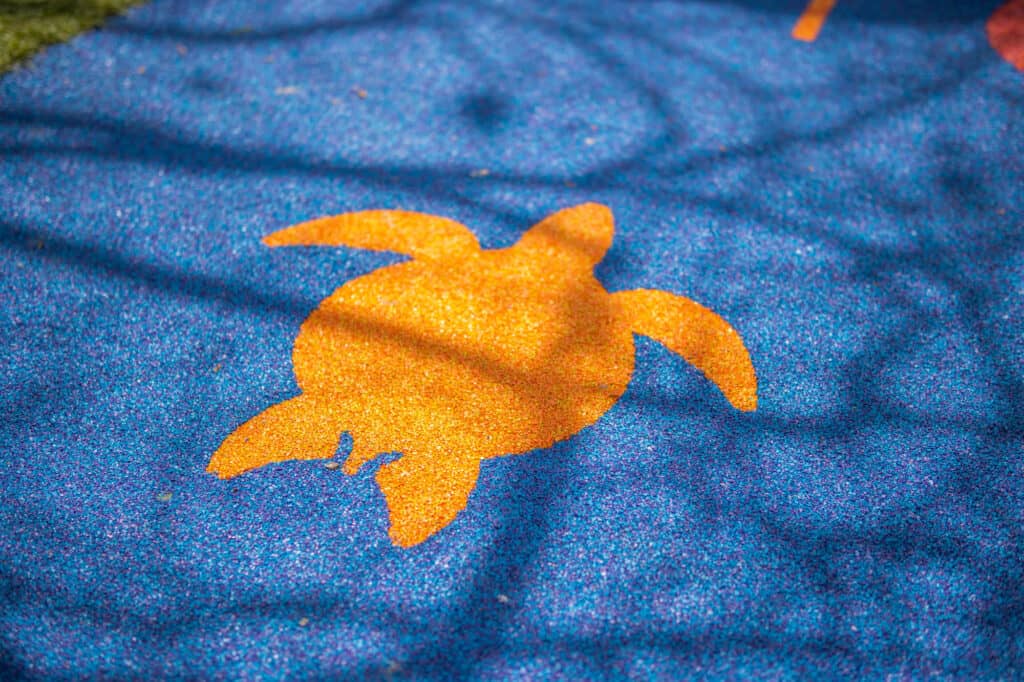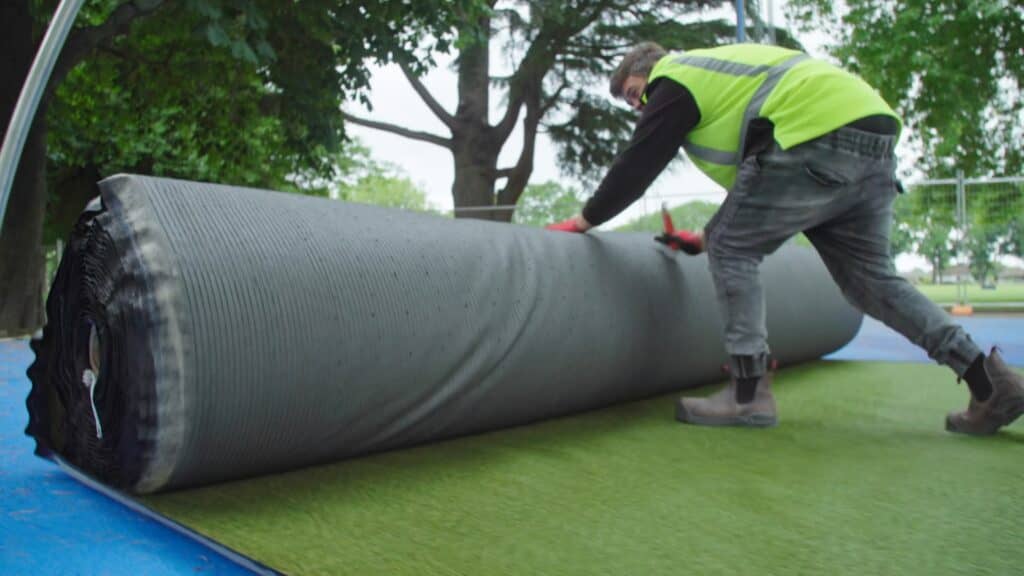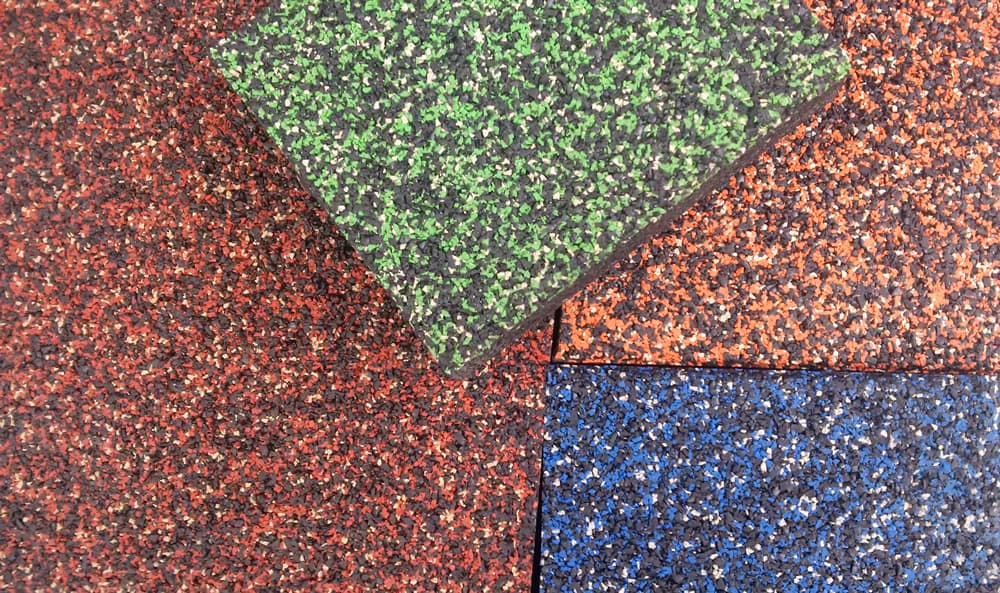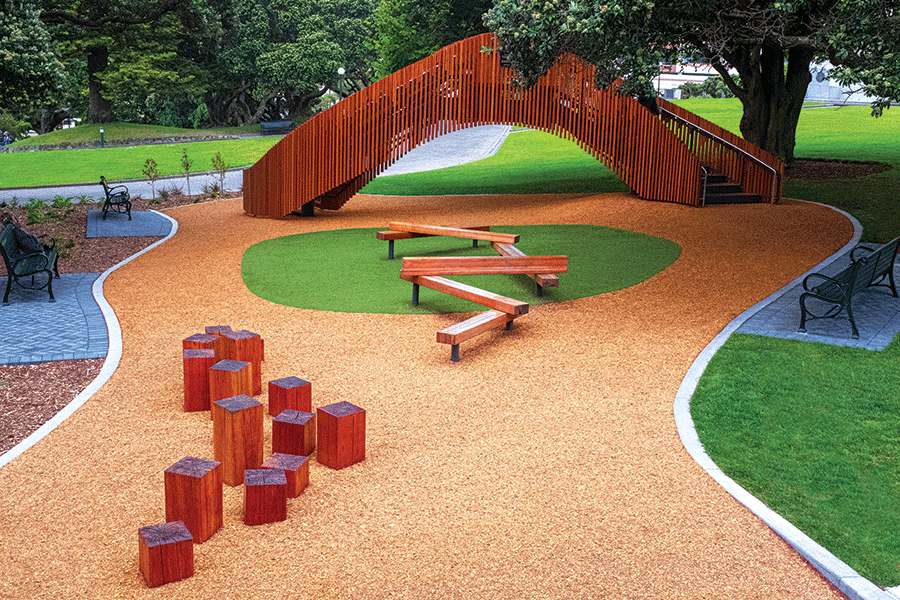You might be considering artificial surfacing for its ability to create tidy, clean spaces. It’s a fantastic way to maintain aesthetics and functionality.
However, as with any material, artificial surfaces come with their own set of challenges.
In this article, we will explore the common issues associated with artificial surfacing and offer practical solutions to prevent and fix these problems.
Wet Pour Rubber
Wet pour rubber is a resilient, seamless surface often used in playgrounds for its safety and aesthetic appeal. It comes in different types, such as EPDM (Ethylene Propylene Diene Monomer), SBR (Styrene-Butadiene Rubber), and TPV (Thermoplastic Vulcanizates).
Each type has distinct characteristics. EPDM and SBR are lower-quality rubber surfaces that can chalk with time and do not have the same UV protection as Rosehill TPV.
The choice of resin significantly impacts the quality of wet-pour rubber. Aliphatic resin is a high-quality option that ensures better colour protection and longevity, especially under UV exposure.
On the other hand, while more cost-effective, aromatic resin offers inferior UV protection, leading to quicker degradation and colour fading.
Common Problems
- Chipping: Occurs due to poor installation or heavy use.
- Fading Colours: UV exposure can degrade the colour vibrancy.
- Mould Growth: Caused by moisture and lack of proper maintenance.
- Right Surface Choice: Opt for TPV combined with aliphatic resin for enhanced colour retention, especially in sunny, UV-intense areas.
- Expert Installation: Ensure the surface is professionally installed to reduce the risk of chipping.
- Regular Maintenance: Use mild detergent and cold water for cleaning to prevent mould, extending the surface’s life.

Artificial Turf
Artificial turf is a popular choice for its natural grass-like appearance and feel. It’s particularly suited for landscaping in high-traffic areas due to its durability and ease of maintenance. If installed with a shock pad layer, it can be used with other play equipment, such as swings and towers.
- Drainage Issues: Poor installation can lead to water retention and drainage problems.
- Slippage on Mounds: Turfs installed on uneven surfaces like mounds can slip and create hazards.
Solutions
- Flat Surface Installation: Ensure installation on flat surfaces to avoid slippage and uneven wear.
- Regular Grooming: Maintain the turf by adding sand and regular brushing to keep it stable and aesthetically pleasing.

Play Tiles
Play tiles have been a staple in playground surfacing for years, offering a balance of safety and practicality.
Issues
- Shifting and Unevenness: Poor installation can shift tiles over time, creating tripping hazards.
- Water Pooling: Inadequate drainage can cause water to accumulate, making the surface slippery.
Solutions
- Stable Installation: Ensure a professional, stable installation to prevent shifting.
- Effective Drainage: Incorporate proper drainage solutions to avoid water pooling and maintain safety.
Learn more:

Rubber Mulch
Rubber mulch, made from recycled tires, is an eco-friendly surfacing option that blends well with natural landscapes.
Common Problem
- Safety Hazards: Inferior quality mulch can break down, creating choking hazards, especially for young children.
- Quality and Placement: Use high-quality mulch and avoid placing it in high-traffic areas. Regular inspections can help identify and mitigate potential hazards.

Conclusion
Artificial surfacing offers many benefits for high-traffic and design-focused areas, but being aware of potential issues is essential. Partnering with experienced professionals ensures that your surface design is visually appealing but also safe and long-lasting.
If you want to know more and start your journey with Creo, don’t hesitate to contact our team at 0800 000 334 or email [email protected].